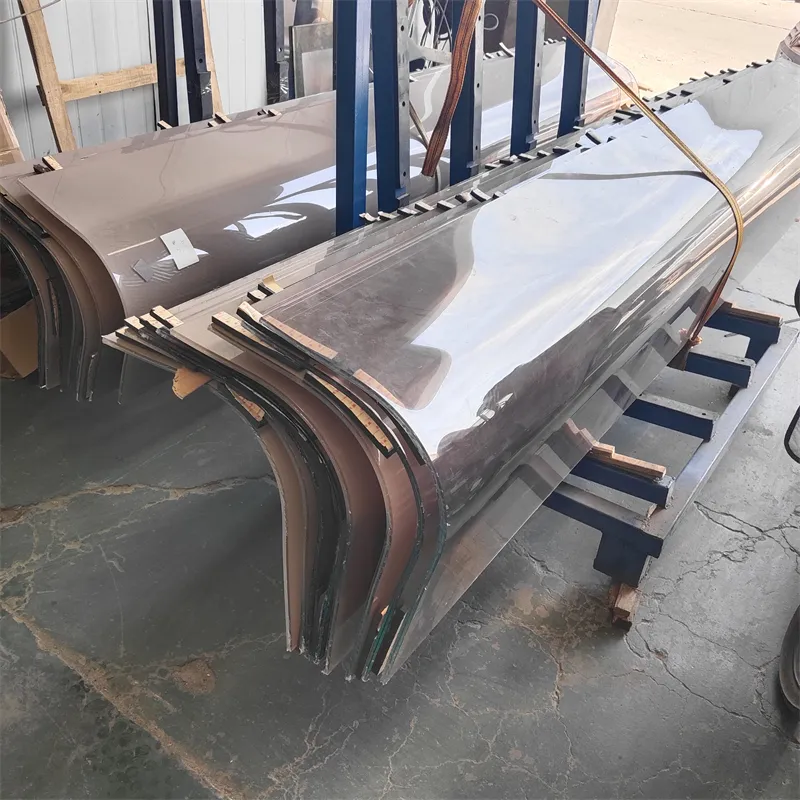Nov . 30, 2024 20:10 Back to list
Understanding Low Emissivity Coatings and Their Impact on Energy Efficiency
Understanding Low Emissivity Enhancing Energy Efficiency in Building Design
Low emissivity (low-e) coatings have become an essential component in modern building design, particularly in the pursuit of energy efficiency and thermal comfort. This innovative technology enhances the performance of windows and building materials by reflecting infrared radiation and minimizing heat transfer, thus contributing to significant energy savings and improved indoor environments.
What is Low Emissivity?
Emissivity refers to the ability of a material to emit thermal radiation. Materials with high emissivity are effective at transferring heat, while those with low emissivity do not emit heat effectively and instead reflect radiant heat. Low-e coatings are thin layers of metal or metallic oxide applied to the glass surface, significantly reducing the U-factor, which measures the rate of heat transfer.
These coatings effectively reflect interior temperatures back into the living spaces during winter, preventing heat loss, while also reflecting external heat during summer, keeping interiors cooler. As a result, low-e windows help maintain a more consistent indoor temperature and reduce reliance on heating and cooling systems.
The Benefits of Low Emissivity Coatings
The primary benefit of low-e coatings is their ability to improve energy efficiency. By minimizing the transfer of heat, these coatings reduce heating and cooling costs. According to various studies, homes fitted with low-e windows can save up to 30% to 50% on energy bills compared to those with standard single-pane windows. This reduction in energy usage not only translates to economic savings for homeowners but also contributes to lowering the overall carbon footprint.
In addition to energy savings, low-e coatings can enhance indoor comfort. By regulating temperature fluctuations, they help maintain a stable environment within the home or commercial space. Moreover, low-e windows also attenuate harmful UV rays, which can lead to skin damage and fading of furnishings, carpets, and artwork. This protection is particularly beneficial for residences with large windows that invite plenty of natural light.
Environmental Impact
low emissivity

The implications of adopting low-e technology extend beyond individual buildings; they have a broader environmental impact. As energy-efficient buildings require less energy for heating and cooling, they lead to reduced greenhouse gas emissions. In urban areas where air quality is increasingly a concern, implementing low-e practices can significantly contribute to sustainable development efforts.
Today, many governments and environmental organizations advocate for the use of low-e coatings as part of green building practices. Incentives for energy-efficient designs, such as tax credits and grants, encourage builders and homeowners to invest in these technologies, ultimately supporting global sustainability initiatives.
Variations of Low-E Coatings
There are two primary types of low-e coatings passive and spectrally selective.
1. Passive Low-E Coatings These coatings allow a higher level of solar heat gain while reflecting infrared radiation to keep heat inside during colder months. They are ideal for colder climates where retaining heat is a priority.
2. Spectrally Selective Low-E Coatings These advanced coatings reflect a greater portion of the sun’s infrared light while allowing visible light to pass through. This type is beneficial in warmer climates as it helps in reducing cooling loads while still keeping spaces bright and inviting.
Conclusion
Low emissivity coatings stand out as a pivotal innovation in contemporary building design, promoting energy efficiency and sustainability. They provide practical solutions for reducing energy costs, enhancing indoor comfort, and protecting against UV damage, all while contributing to broader environmental goals. As our society continues to grapple with the effects of climate change and seeks to develop greener practices, the adoption of low-e technologies in residential and commercial architecture will undoubtedly play an integral role in shaping a more sustainable and energy-efficient future.
For those considering building or renovating, investing in low-e windows is a decision that not only benefits individual households but also contributes positively towards a collective effort in environmental stewardship.
-
Safety and Style with Premium Laminated Glass Solutions
NewsJun.24,2025
-
Reinvents Security with Premium Wired Glass
NewsJun.24,2025
-
Premium Float Glass Line for Modern Architecture
NewsJun.24,2025
-
Low Emissivity Glass for Energy-Efficient Architecture
NewsJun.24,2025
-
High-Performance Insulated Glass Solutions for Modern Architecture
NewsJun.24,2025
-
Elevates Interior Style with Premium Silver Mirror
NewsJun.24,2025
Related PRODUCTS














